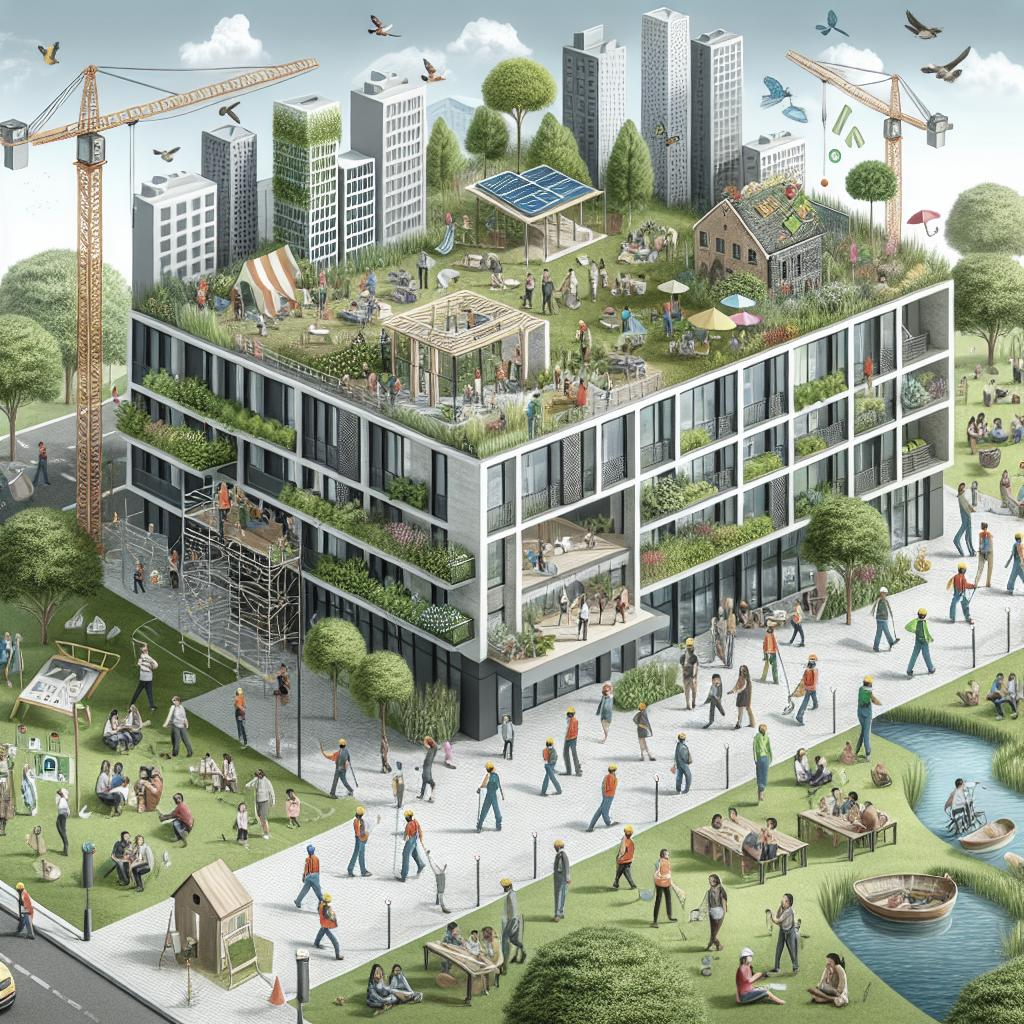“`html
The Social Impacts of Sustainable Construction
As concerns about the environment continue to rise, the construction industry is evolving towards more sustainable practices. Sustainable construction focuses on reducing the environmental impact of building projects by utilizing energy-efficient methods and sustainable materials. However, the benefits extend far beyond the ecological realm. This blog post explores the social impacts of sustainable construction, highlighting the improvements in community well-being, economic stability, and social equity. Through various examples and insights, we delve into the profound impact that sustainable building practices have on society as a whole, paving the way for a more sustainable future.
1
Sustainable construction positively influences community well-being by fostering healthier living environments. Buildings designed with sustainable practices typically emphasize better indoor air quality and natural lighting, reducing health risks associated with poor ventilation and exposure to chemicals. As a result, residents and workers in these structures experience fewer health issues, contributing to an enhanced quality of life.
Beyond individual benefits, sustainable buildings often incorporate green spaces and renewable energy sources, which promote outdoor activities and social interaction. These elements can strengthen community ties, fostering a sense of belonging and collective responsibility. By focusing on designs that enhance public spaces, sustainable construction can act as a catalyst for social cohesion and improved community engagement.
2
On an economic level, sustainable construction practices can lead to job creation and economic stability. The demand for skilled workers in fields such as green engineering, renewable energy installations, and sustainable landscaping is on the rise, creating new employment opportunities. This trend not only supports local economies but also encourages the diversification of job markets.
Moreover, buildings constructed with sustainable methods generally lead to lower operational costs. Energy-efficient systems reduce utility expenses, which offers financial relief to residents, businesses, and public entities. These savings can be redirected into other community needs, further fostering economic resilience and prosperity.
3
Sustainable construction also promotes social equity by making environmentally friendly living spaces more accessible. Affordable, energy-efficient housing reduces the cost burden on low-income families, offering them the opportunity to live in healthier homes while saving on energy bills. This accessibility can help address socioeconomic disparities and support more equitable communities.
In addition to affordability, sustainable practices can promote inclusive urban development. By integrating diverse community needs into planning and design, sustainable construction encourages broader participation in decision-making processes, empowering marginalized voices and fostering a sense of ownership among community members.
4
Education and awareness are vital components of sustainable construction’s social impact. By integrating sustainability into educational curricula and community programs, the construction industry can raise awareness about environmental issues and promote sustainable practices as a standard for future generations.
Partnerships between educational institutions, community organizations, and construction companies can facilitate knowledge sharing and promote innovation. This collaboration fosters a culture of sustainability, inspiring individuals to contribute to more sustainable living practices and ensuring a more informed and conscientious society.
5
The global challenges we face, including climate change and resource scarcity, underscore the importance of sustainable construction as a viable solution. As urbanization continues to accelerate, implementing sustainable practices in construction is crucial for mitigating environmental strains and enhancing the resilience of urban centers.
By pioneering sustainable construction practices, the industry can influence other sectors, sparking a widespread shift towards sustainability that permeates various facets of society. This interconnectivity paves the way for a more sustainable future, characterized by balanced ecological, economic, and social systems.
Rate this article
We value your feedback on our articles. Please let us know how this article resonates with you and your thoughts on the topic of sustainable construction.
Thanks for your feedback
Your input helps us to continually improve our content and deliver articles that matter to our readers. We appreciate your contribution to the ongoing conversation around sustainability.
Tell us more
If you have personal experiences, additional information, or queries about sustainable construction, feel free to share your thoughts with us. Your insights could be valuable in future articles.
More articles on Sustainability
Explore our library of articles to learn more about sustainability and the innovative practices shaping a healthier planet for future generations.
Are you sure you want to delete your contribution?
If you made a comment, posted feedback, or interacted with our content, please confirm your intent to delete your contribution to ensure no accidental changes occur.
Are you sure you want to delete your reply?
If you’ve replied to a comment or added additional thoughts, double-check your decision to ensure that your input is not lost inadvertently.
Future Prospects
| Aspect | Social Impact |
|---|---|
| Community Well-being | Healthier environments and social cohesion |
| Economic Stability | Job creation and reduced operational costs |
| Social Equity | Affordable housing and inclusive development |
| Education | Increased awareness and knowledge sharing |
| Global Challenges | Sustainability as a solution for environmental strains |
“`
